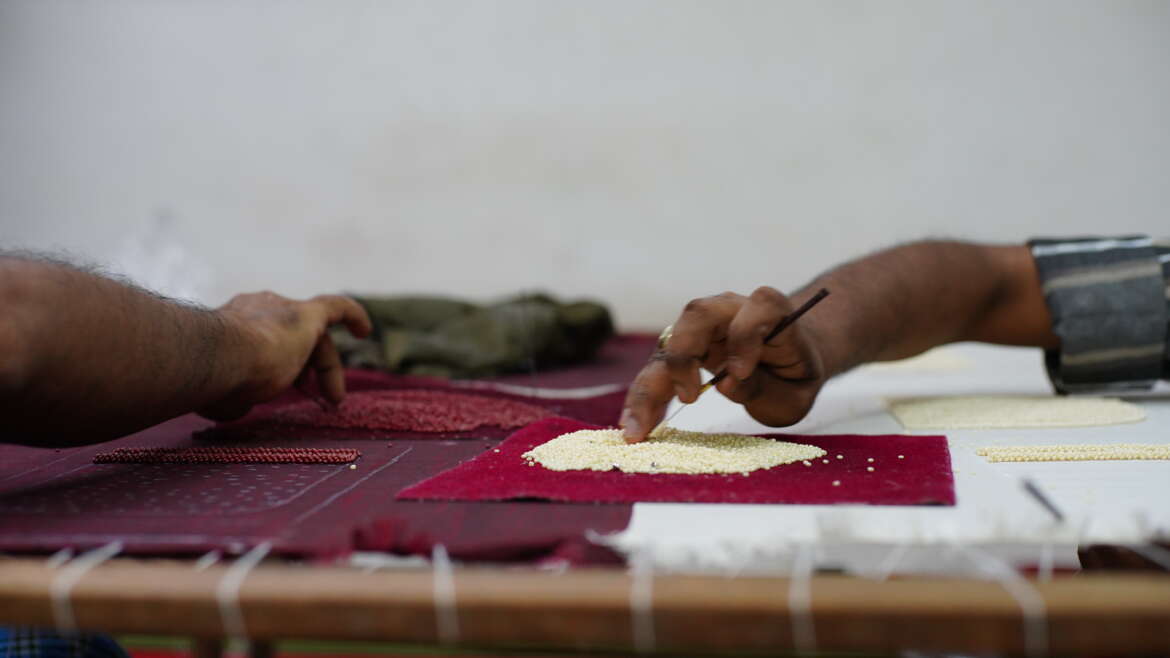You getting perplexed after reading this is absolutely normal, handicraft industry is the 2nd largest employment generator. It is sad to see even after decades(or centuries) of the existence of handcraft in India, it has not got the recognition it deserves. The handicraft and handloom industry has been the backbone of the rural economy of India and has helped people to take their life to a better place. The sector has spread to the urban population in the last few years due to it being a self-sustaining business and a pioneer of eco-friendly, zero-waste production.
The last official study says that we have 7 million artisans currently working in handicraft, although the unofficial data indicates the strength is larger. And assures India is home to around 200 million artisans. Now if we start telling you the artforms and their origin we would need a book for it, yes it is that huge. Here are a few for you, thangka painting in Ladakh and Himachal Pradesh, basket-weaving in Uttarakhand, crochet and lacework in Goa, sandalwood carving and banjara embroidery in Karnataka, sikki grass products in Odisha, Madhubani paintings and mulberry silk products in Bihar, choktse tables in Sikkim, eri silk products in Assam and bamboo products in northeast India. And these are not even a handful from the ocean.
Here are a few pointers that tell how and why handicraft is necessary: –
- Women Empowerment: – Let us all take an example from our own home, we have seen our mother, grandmother doing some work with needles and yarn that results in a beautiful yet not that costly home decor or say on garments. Handicrafts and women are both beautiful individualities and the binding of the two gives colors to society in many forms. In this sector, a large number is of women from well-settled as well as the weaker section of the society are involved. For a long time gender inequality, family obstacles, and social drawbacks have killed the talent on a large scale. However, many institutes have bought enhancements to the sector and have given women from remote areas a new journey to rewrite their stories.
- Support numerous households: – The handicraft is the knowledge that is passed on, from generations to the upcoming ones. The art with generations gets updated with new ideas to portray the art more beautifully. On the other hand, the textile and weaving industries are coming with big projects that have helped households to become financially stable. Products such as home accessories, luxury handbags, crossbody bags, and new ideas made it possible for traditional art to make its place in the fashion market.
- Keeping the handicraft skills alive: – Just a decade ago, the traditional art and artisans faced a lot of difficulties due to western influence in the market products. But the factors such as social media, awareness, and government support have bought back the handicraft and artisans into the race and this time with more power. Now the art is applied to modern and demanding products such as a handbag, monogram bags, floral bags, printed bags, etc. Social media has allowed the artisans to trade directly with the customers and get a proper revenue which earlier use to be limited due to middlemen and less awareness.
- The economic and social significance of handicraft industry: – The current market of India’s textile that is around $300 billion has grown immensely. It was $150 billion in 2017 and $250 billion in 2019 and is predicted to touch new heights in upcoming years. The art from a particular region reflects the image of the culture and livelihood and has helped to spread the knowledge about the place to other parts. Namely blue pottery and block printing from Rajasthan, gond painting in Madhya Pradesh, and many more.

